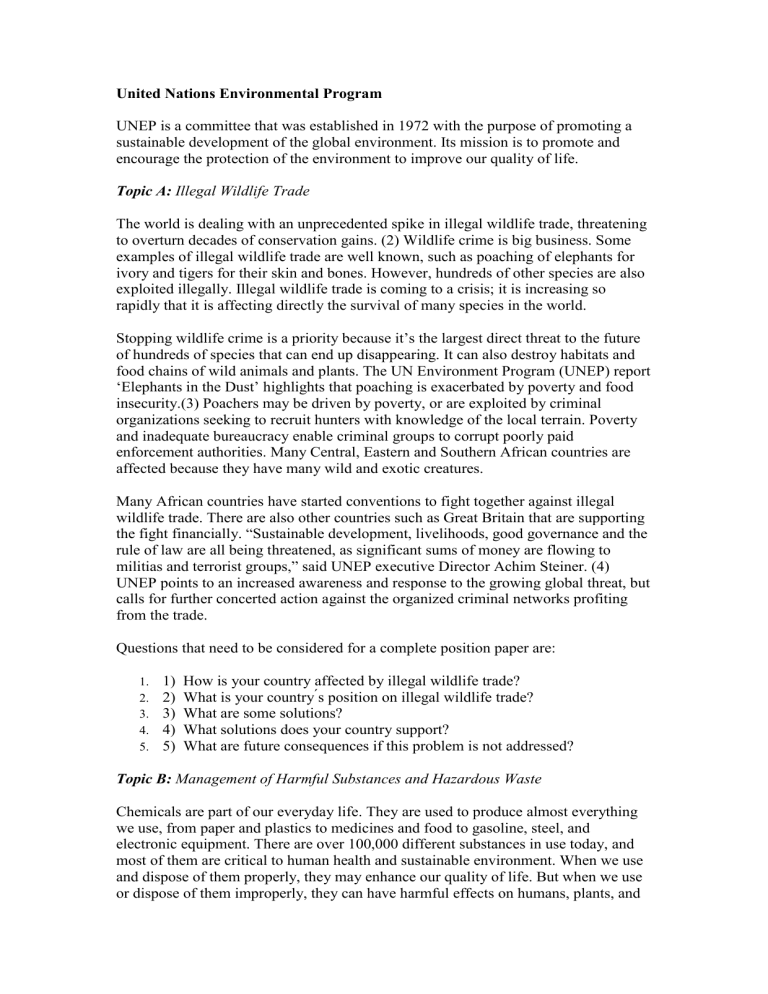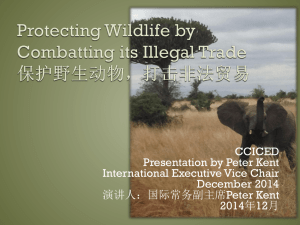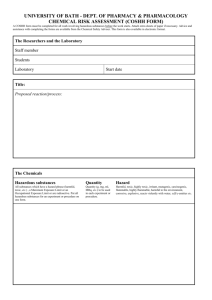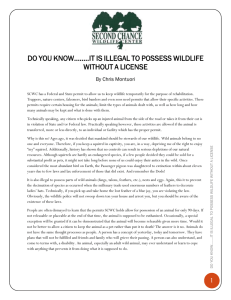United Nations Environmental Program UNEP is a committee that

United Nations Environmental Program
UNEP is a committee that was established in 1972 with the purpose of promoting a sustainable development of the global environment. Its mission is to promote and encourage the protection of the environment to improve our quality of life.
Topic A: Illegal Wildlife Trade
The world is dealing with an unprecedented spike in illegal wildlife trade, threatening to overturn decades of conservation gains. (2) Wildlife crime is big business. Some examples of illegal wildlife trade are well known, such as poaching of elephants for ivory and tigers for their skin and bones. However, hundreds of other species are also exploited illegally. Illegal wildlife trade is coming to a crisis; it is increasing so rapidly that it is affecting directly the survival of many species in the world.
Stopping wildlife crime is a priority because it’s the largest direct threat to the future of hundreds of species that can end up disappearing. It can also destroy habitats and food chains of wild animals and plants. The UN Environment Program (UNEP) report
‘Elephants in the Dust’ highlights that poaching is exacerbated by poverty and food insecurity.(3) Poachers may be driven by poverty, or are exploited by criminal organizations seeking to recruit hunters with knowledge of the local terrain. Poverty and inadequate bureaucracy enable criminal groups to corrupt poorly paid enforcement authorities. Many Central, Eastern and Southern African countries are affected because they have many wild and exotic creatures.
Many African countries have started conventions to fight together against illegal wildlife trade. There are also other countries such as Great Britain that are supporting the fight financially. “Sustainable development, livelihoods, good governance and the rule of law are all being threatened, as significant sums of money are flowing to militias and terrorist groups,” said UNEP executive Director Achim Steiner. (4)
UNEP points to an increased awareness and response to the growing global threat, but calls for further concerted action against the organized criminal networks profiting from the trade.
Questions that need to be considered for a complete position paper are:
1.
2.
3.
4.
5.
1) How is your country affected by illegal wildlife trade?
2) What is your country ́s position on illegal wildlife trade?
3) What are some solutions?
4) What solutions does your country support?
5) What are future consequences if this problem is not addressed?
Topic B: Management of Harmful Substances and Hazardous Waste
Chemicals are part of our everyday life. They are used to produce almost everything we use, from paper and plastics to medicines and food to gasoline, steel, and electronic equipment. There are over 100,000 different substances in use today, and most of them are critical to human health and sustainable environment. When we use and dispose of them properly, they may enhance our quality of life. But when we use or dispose of them improperly, they can have harmful effects on humans, plants, and
animals. The global economy is generating increasing amounts of hazardous waste in countries that lack the systems and resources for their proper management.(1) This mismanagement of harmful substances causes the contamination of other nonhazardous waste. It is necessary to take control of waste management, to follow the correct procedure to keep these substances under control. or completely stop the use of many substances. It ́s our environment and our own health that we are harming.
This has to stop, or there will be irredeemable effects on our environment.
When hazardous wastes are released in the air, water, or on the land they can spread, contaminating even more of the environment and posing greater threats to our health.
For example, when rain falls on soil at a waste site, it can carry hazardous waste deeper into the ground and the underlying groundwater.(2) Exposure chemical agents in the environment in air, water, food and soil have been implicated in numerous adverse effects on humans from cancer to birth defects.(3)
Electronic Waste (e-waste) has become an alarming concern because of the enormous amount of toxic chemicals that are not being correctly managed such as mercury, lead, cadmium, arsenic, beryllium and brominated flame retardants. These are some of the most toxic substances known to humankind. The toxic materials in electronics can cause cancer, reproductive disorders, endocrine disruption, and many other health problems if this waste stream is not properly managed.(4) In 2008, 3.16 million tons of e-Waste was generated in the U.S. Of this amount, only 430,000 tons or 13.6% was recycled, according to the Environmental Protection Agency (EPA). The rest was trashed in landfills or incinerators.
UNEP already has developed many projects to make countries aware of this problem.
One of their goals is to assist countries to develop appropriate policy and control systems for harmful substances. UNEP calls for further concerted action to stop all these hazardous wastes being released to the environment.
Questions that need to be considered for a complete position paper are:
1) How is your country affected by hazardous waste?
2) What is your country ́s position?
3) What are some solutions?
4) What solutions does your country support?
5) What are future consequences if this problem is not resolved?








